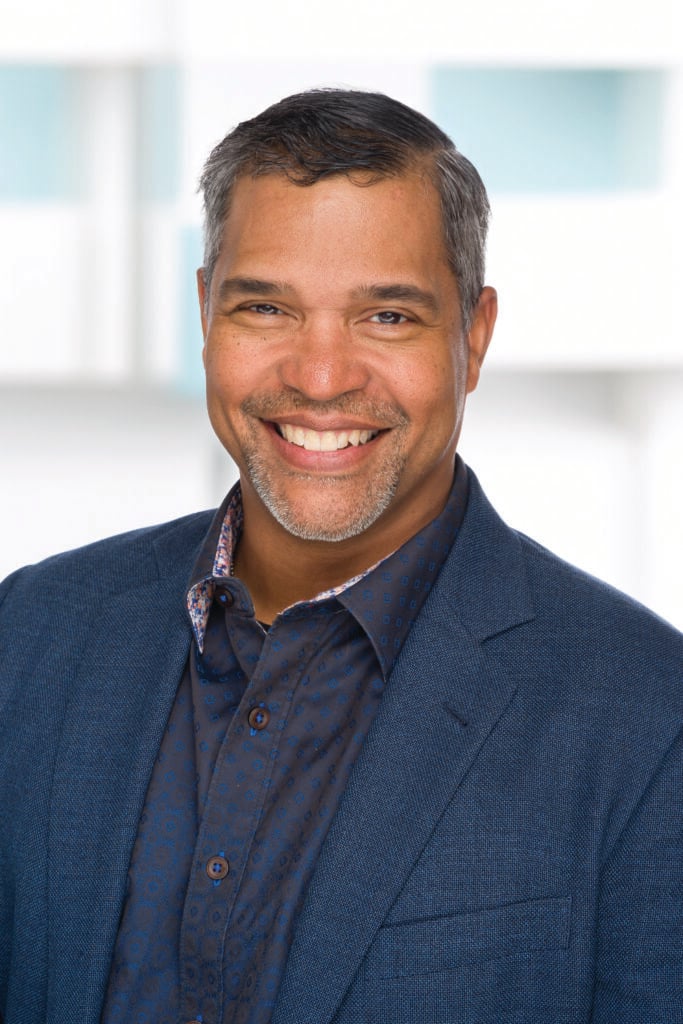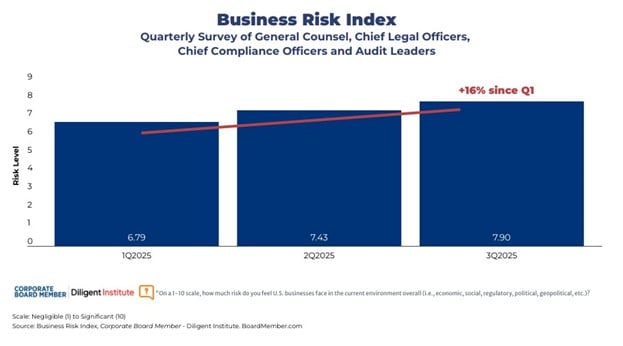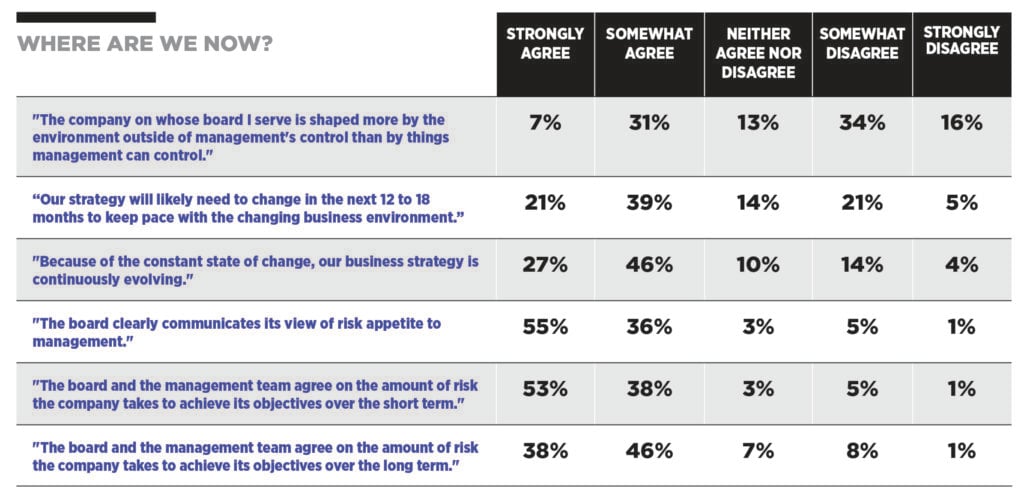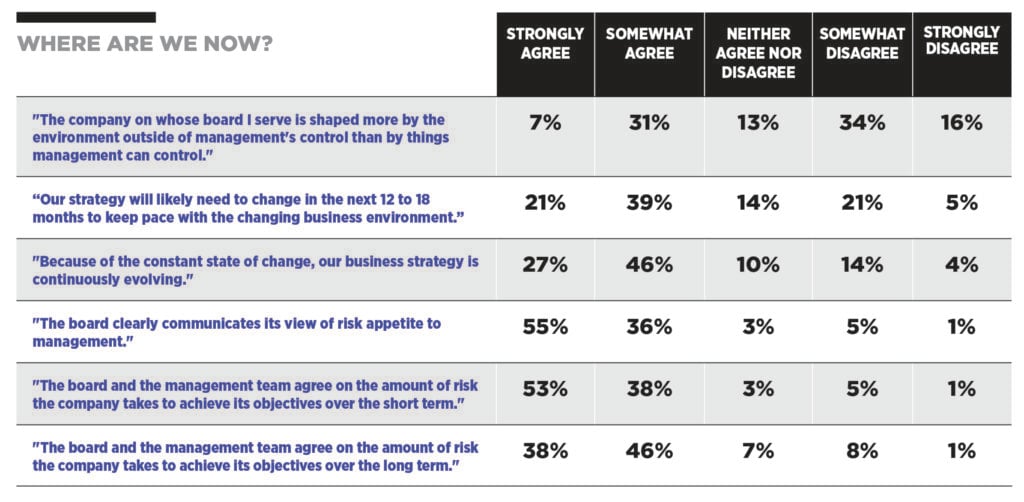In December 2024, when Intel directors lost confidence in CEO Pat Gelsinger’s turnaround strategy—culminating in a $16.6 billion loss and 60 percent stock decline—they exposed a critical governance flaw: lacking sufficient semiconductor expertise to evaluate whether his plans could succeed in an AI-driven market.
The knowledge gap became glaringly apparent after seasoned semiconductor executive Lip-Bu Tan resigned in frustration over Intel’s inadequate AI strategy and bloated workforce, only to be appointed CEO in March 2025—a dramatic reversal that underscored that Intel’s struggles stemmed not from operational mistakes alone but also fundamental shortcomings in board composition and oversight.
With the business landscape evolving at breakneck speed, as new technologies, regulatory changes and market disruptions emerge faster than ever before, boards must ask: How can we ensure our board composition remains relevant and effective not just today but also for the uncertainties of tomorrow?
Based on insights from leading governance experts and seasoned directors, here are six essential steps that can help any board future-proof its composition.
1. Regularly update the skills matrix.
A static document reviewed annually is no longer sufficient; forward-thinking boards treat their matrices as living documents. “The skills matrix is meant to be a go-forward look, so as you adapt the strategy, the skills matrix gets updated earlier rather than later,” says Karel Czanderna, board member with Cibo Vita and Soteria Flexibles and former CEO of Flexsteel Industries.

Often, the challenge is lack of specificity and honesty. “Everybody checks every box, which is just not true,” says Julie Daum, chair of the North American Board Practice at Spencer Stuart. “None of us have all of the skills.”
Daum recommends more specificity and rigor—for example, asking directors to check the four boxes representing their top skills, or using the Harvey Balls approach. “So you are giving yourself a ranking of one to four on each skill.”
“Don’t grab your skills matrix and look backward at who you’re replacing,” adds Ed Magee, board member of WD-40 and COO of the Thomas J. Frist, Jr. School of Medicine. “Look forward and contemplate the next set of skills you’ll need.”
2. Rigorous strategic board evaluations.
“High-performing boards do really strategic evaluations on an annual basis, looking at what are the objectives that we are continuing to drive,” says Tierney Remick, vice chairman and co-leader of Korn Ferry’s Global Board and CEO Practice.
The focus should be on alignment between board capabilities and strategic needs: “Do we have the voices around the table that can contribute in a way that supports the CEO and the management team?”
External evaluation can provide valuable perspective, adds Magee. “Best-in-class companies take the time to say, ‘In order for us to be as good as our shareholders deserve, we’ve got to invest in the board.’” He advocates for bringing in outside experts every three to four years, noting that “we owe our shareholders an investment in the operations of the board so that you do make better decisions.”
3. Prioritize currency and domain expertise—especially with tech.
“When we talk to CEOs, one of the first things that they mention is what I’ll call currency,” says Daum. “They would like to see people on the board who are still working full-time and really going through what they’re going through.”
That doesn’t mean abandoning the value of experience. The key is finding directors who can bridge expertise with ongoing learning. “Former CEOs who are curious are staying current,” notes Remick.
John Driver, CEO of Lynx Technology and board member at City First Broadway and Vital Energy, emphasizes the importance of broad technological literacy across all board members. “Everyone on the board should at least be technology conversant,” he says, “because it’s hard to name any sector now that doesn’t have a very large component of technology in that sector and in that company.”
Magee agrees, adding, “It’s not enough just to ask a good question these days. You need enough competency on the topic so that you can recognize a good answer.”
For aspiring and current directors, this means embracing continuous learning as a core responsibility. Czanderna describes this as fundamental to the role: “It’s a huge responsibility that I have, and it’s one that I welcome… it is my job to know.”
4. Don’t overdo it with specialists.
While expertise is crucial, the goal should be finding the right balance between deep domain knowledge and broad business acumen. “You can get into this trap of hyper-specialization and it’s not always related to what the board needs to do for the organization and its shareholders,” says Taylor Griffin, COO of The Miles Group.
Driver advocates for what he calls “T-shaped” experience: “I’m a business generalist across the board, but I can go very deep in one specific area.”
Remick agreed—when a board does seek specialists, they should look for those with broader capabilities: “Look for an executive able to engage around the whole of the business—they do exist. [Finding them] takes time and assessment.”
If a particular risk is significant to your enterprise or industry—for example, cybersecurity in healthcare or finance—then a specialist might be critical. But more broadly, Magee says, “You can’t afford to have one specialist for every crisis.”
5. Plan succession and refreshment.
The most effective boards approach director succession planning similarly to CEO succession, looking years ahead and building relationships with potential directors before they’re needed, says Remick.
“We’re working on several board succession projects now that are three years in nature: Who will be rolling off? What do we want to bring in? How’s our strategy evolving?”

The key is creating overlap for knowledge transfer, hiring one or two directors six months or a year in advance of specific directors rolling off, says Magee. “Really wise boards don’t wait until those board members leave.”
Structural elements can facilitate this planning. “Step one is making sure you have term limits in place,” says Czanderna, who notes that for one of her own board appointments, she “had a pretty good indication” six months in advance that she would be asked to join the board to replace “a board member who needed to be respectfully retired.”
6. Have the tough conversations.
Perhaps the most challenging aspect of board refreshment is addressing situations where previously valuable directors no longer align with the board’s evolving needs.
Misalignment is often an open secret, notes Daum. “If you ask each member of a board to say who are the two top performers and who are the two weakest, they all tend to agree. It’s not unknown— it’s just unspoken about.”
The challenge is moving from awareness to action, she says. “Either the chair or the chair of the governance committee [needs] to really be able to look at their board matrix, their board evaluations and have a conversation with people who may have been a fabulous director at one point in time but their experience just isn’t as relevant.”
Increasingly, directors are taking the initiative themselves. “I have seen recently more board directors who may have sat for three to five years or six years on a board say, ‘It’s probably time for me to not stand for reelection,’” Remick says. “There’s a self-awareness that has emerged.”
The foundation for these difficult conversations is ongoing communication and clear expectations, says Driver. “If you haven’t built into your system these informal discussions, or formal discussions, then people could be surprised by this conversation.” He advocates for transparency about board strategy: “If you’ve identified the skills necessary before getting to that five-year plan, then everyone knows that… it shouldn’t be as much of a surprise when you look at that skills matrix.”
Remick emphasizes that the best boards build feedback into their culture: “High-performing boards have a strong culture of feedback, and that feedback is both informal and formal. Great chairs are able to pull somebody aside and say, ‘Hey, you’re not carrying your weight here.’”







